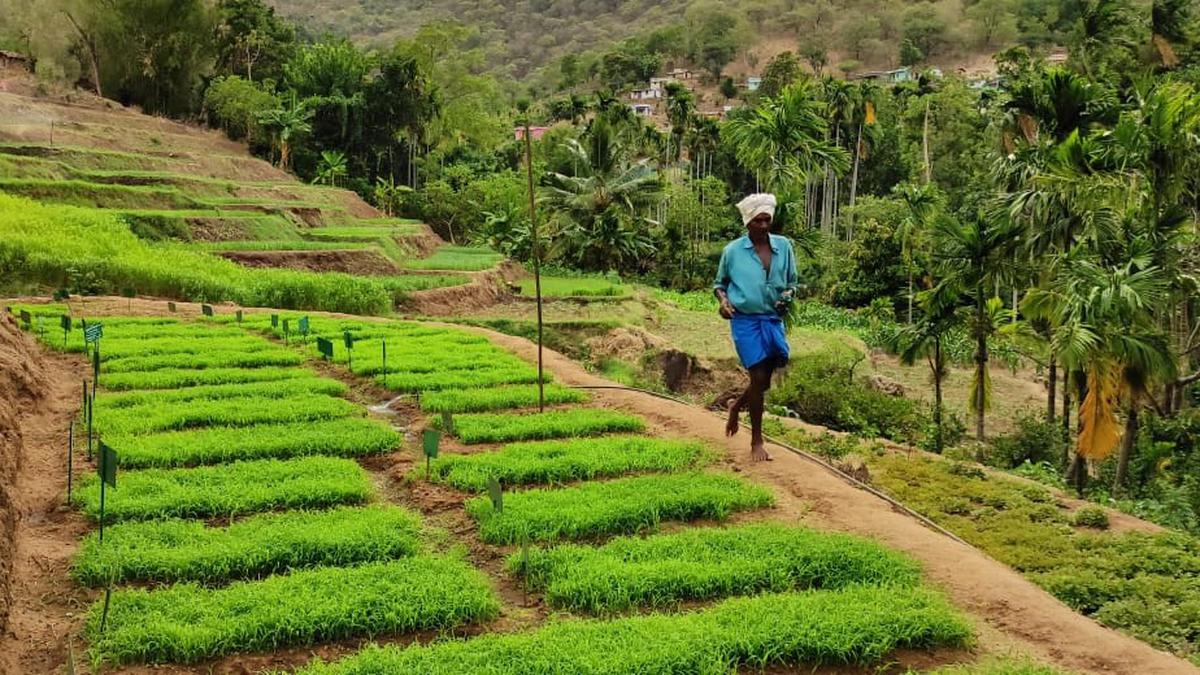“Ragi dish Korangatti is had for breakfast, lunch and dinner. Accompanying it would be a curry made of vegetables that are in season or a non-vegetarian dish. Beans, pumpkin and amaranthus are some of the vegetables that we usually cook. Anchovy, crab curry and meat are also served as sides,” explains M Chandran, a member of the Muduvan tribe from Thayyannankudy settlement under Chinnar Wildlife Sanctuary, Idukki.
Chandran was explaining how millets, especially ragi, has been a constant in their diet, along with other millets. They now grow 34 varieties of ragi, with millets such as chama (little millet), thina (foxtail millet) and varagu (kodo millet) and multiple varieties of beans, amaranthus, maize and pumpkin. This was made possible by Punarjeevanam project of Kerala Forest and Wildlife Department.
“Korangatti is a glutinous dish, slightly bigger than an idli, made from ragi flour that is cooked in boiling water to a halwa-like consistency. It is poured onto a plantain leaf and is left to set. No sugar or salt is added,” he adds.
Punarjeevanam (revival or resurrection) was launched in 2016 to revive farming of millets and endemic crops in the tribal settlements under Chinnar Wildlife Sanctuary, which comes under Munnar Wildlife Division. The project, also involving Anamudi Forest Development Agency, has completed the seventh phase.
There are 11 tribal settlements comprising Muduvan and Hill Pulaya communities under the Wildlife Division. “The cultivation is primarily in Thayyannankudy settlement and it is now being extended to a few more settlements. We have also started outreach programmes,” says Vinod SV, Chief Wildlife Warden, Munnar Wildlife division.
One such initiative is at the Institute of Human Resources Development (IHRD) College of Applied Sciences at Kanthalloor, Idukki, where there is a millet garden on 75 cents with varieties of ragi, chama, thina and varagu.
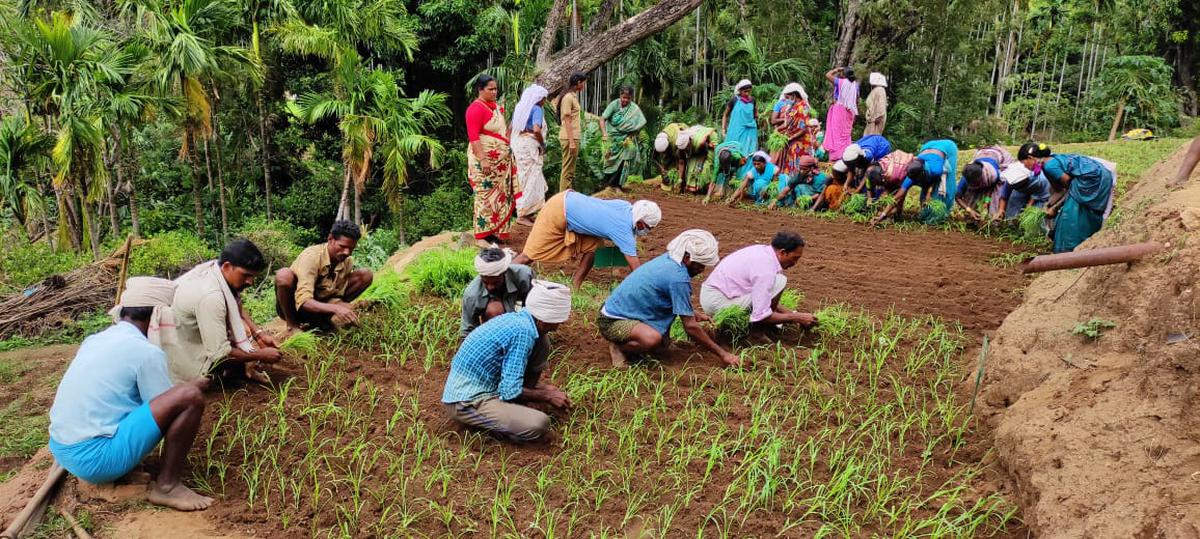
Planting of millet saplings in progress at Thayannankudy tribal settlement
| Photo Credit:
SPECIAL ARRANGEMENT
The genesis of Punarjeevanam was the emphasis on participatory forest management in the National Forest Policy 1988. Medical camps conducted for the tribals under the division by the Forest Department found that the children were malnourished and anaemic, while adults had to deal with various lifestyle diseases, especially diabetes. After interacting with the heads of various tribal settlements, the officials concluded that a change in the food habits of the tribals was the root cause of their undernourishment and lifestyle health issues.
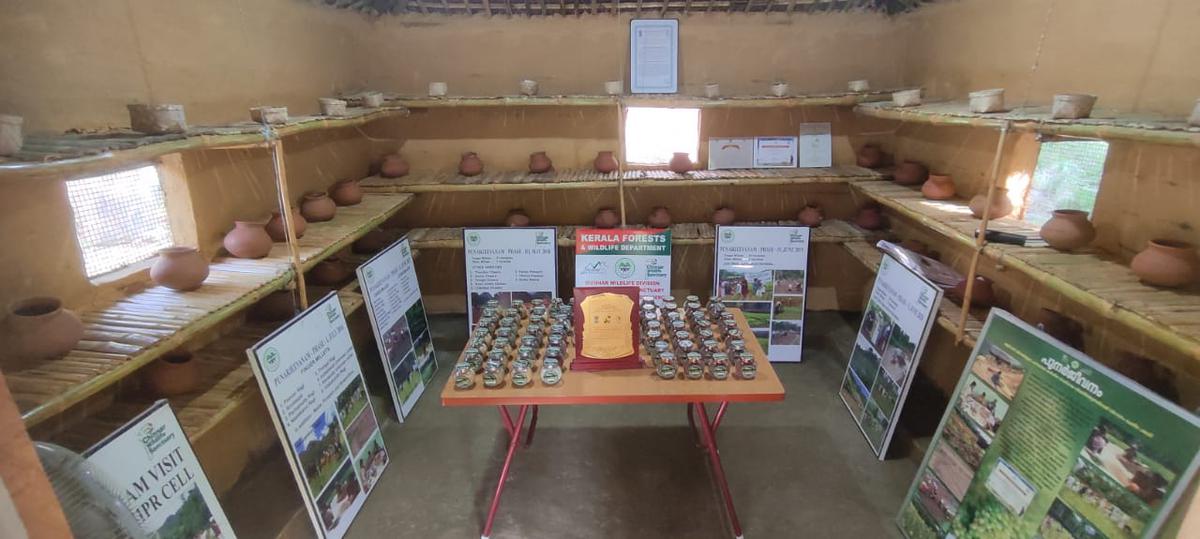
A view of seeds storage centre at Chinnar
| Photo Credit:
SPECIAL ARRANGEMENT
“They used to grow and consume ragi and other millets, which are rich in nutrients. These crops were once the staple of the Anchunadu region, which comprises Marayur, Kanthallur, Karayur, Keezhanthur and Chinnar. But once the government introduced ration rice, they moved away from cultivating these crops. Punarjeevanam was not just about reviving the varieties. Tribes play a key role in forest management and this was one way of making them participate in it. Conservation of nature starts with them,” says PM Prabhu, the then Assistant Wildlife Warden of the division and currently Chief Wildlife Warden, Peechi Wildlife Division.
Top honours
Besides winning the State government’s award for tribal hamlets engaged in reviving tribal agriculture, Thayannankudy was selected for the Plant Genome Saviour Community Award instituted by the Union government for the protection of rare ethnic seed varieties and promotion of traditional cultivation.
Chandran, 66, points out that Punarjeevanam has been an eye-opener for the tribal community. “When we used to eat the food we cultivated, we all were healthy. But we couldn’t conserve the seeds due to several reasons such as lack of rainfall and destruction of crops by wild animals. Farming came to a standstill over a period of time and our food habits changed. But we didn’t know that it would cause illnesses and lifestyle diseases such as diabetes, blood pressure variations etc,” he says.
At present, tribal communities can easily harvest over 100 kilograms of grains from 20-25 cents. The yield depends on the fertility of the soil and climatic conditions, says Dhanesh PK, social worker with the wildlife division. He adds that millet consumption went up during the pandemic.
The next phase of cultivation will commence by the end of May or early June. Meanwhile, members of the tribal community have been guiding the students of IHRD college to plant millets and to take care of them.
Conserving seeds
A seeds storage centre is another highlight of the project, says Nithin Lal, assistant wildlife warden/range officer. Seeds of all varieties are stored in pots at the centre. “The IHRD college will be handing over seeds of the varieties we have provided to our storage centre. In the meantime seeds are being exchanged between the tribal settlements and enquiries for the seeds are also coming from various organisations and institutions. We are also getting invites to be part of exhibitions to showcase the varieties,” he adds. Among other tribal settlements where the cultivation has been initiated are Iruttalakudi, Echampetti and Chambakkad.
Punarjeevanam had kicked off with the planting of eight varieties of ragi that were available with the tribals. Once they sprouted, the officials sought the help of the kaani (chieftain of the settlement) to identify the varieties. “There are marked differences in the panicle or the colour of the stem or leaves/leaf sheath etc. The tribes name these plants based on these features. Otherwise, the grains all look the same. There isn’t much difference in the taste,” says Dhanesh.
What is in a name
For example, Neelakanni has a bluish shade on its stem and leaves; the internodes in Meenkanni’s stem resemble the shape of a fish’s eye; Kunjikari bears a small inflorescence under the main one; Changaliragi has a chain-like design on the inflorescence; the Poovan variety looks like a poovu (flower); Pachamutti is called so because it is green in colour from top to bottom; Thongal ragi has hanging inflorescence. Some other ragi varieties are Karimutti, Cholakkambili, Arakanachi, Aruvi, Undapoovan, Rotti, Sirukoran, Karikanni etc. Of the lot Karimutti can be harvested within three to four months, adds Chandran.
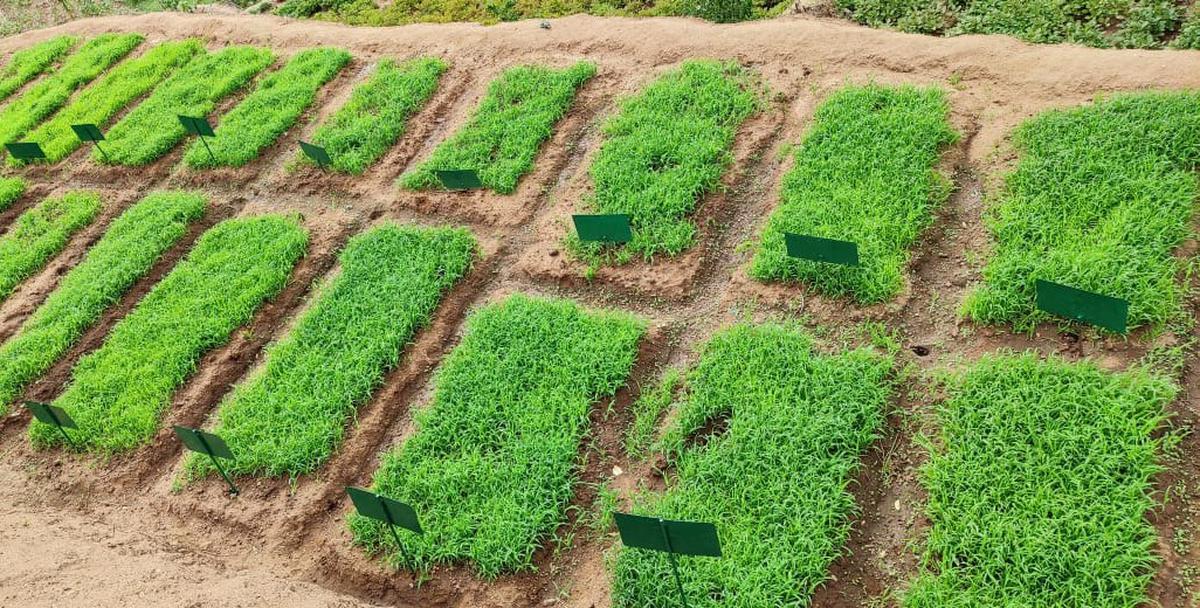
A view of the seed beds of different millet varieties at Thayyannankudy tribal settlement
| Photo Credit:
SPECIAL ARRANGEMENT
The beans varieties were included in the second phase of the project. They currently grow Avakodi, Kadampara, Kodi bean, Pal butter, Karutha bean, Manja muriga, Keeravani, Pithavara etc. Apparently, these beans find a good market across the border in Tamil Nadu.
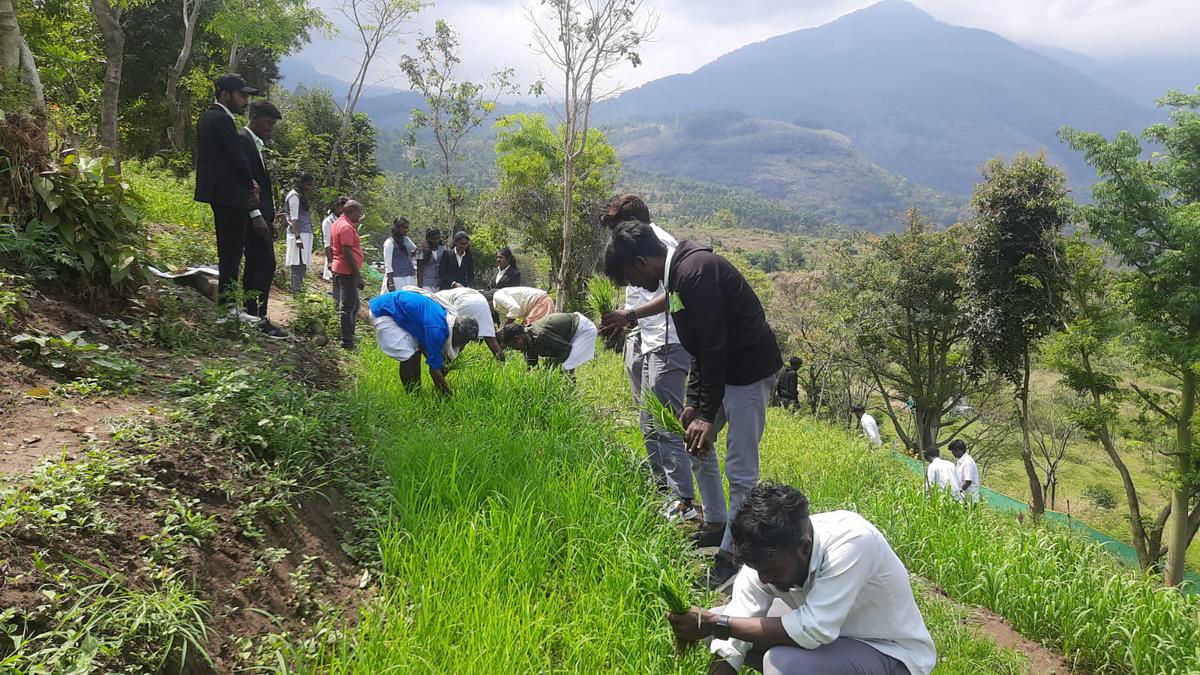
Students of IHRD College of Applied Science, Kanthalloor, at their millet garden
| Photo Credit:
SPECIAL ARRANGEMENT
Besides the commonly seen green and red varieties of amaranthus, they grow thoppi keera and pori keera. “The seeds of pori keera when roasted will pop up like corn and they can be had with honey,” adds Dhanush. Pumpkin ( poosani in tribal language) varieties are chinna poosani, periya poosani, vella poosani and pattanakke.
If they harvest any produce in excess, they are sold at the weekly open market, Chilla, adds Nithin. The Department is promoting the making and sale of ragi-based dishes such as ladoo, milk, pathiri and pakkavada.
#tribal #settlements #Chinnar #Wildlife #Sanctuary #reviving #cultivation #millets #endemic #crops #Punarjeevanam #scheme

